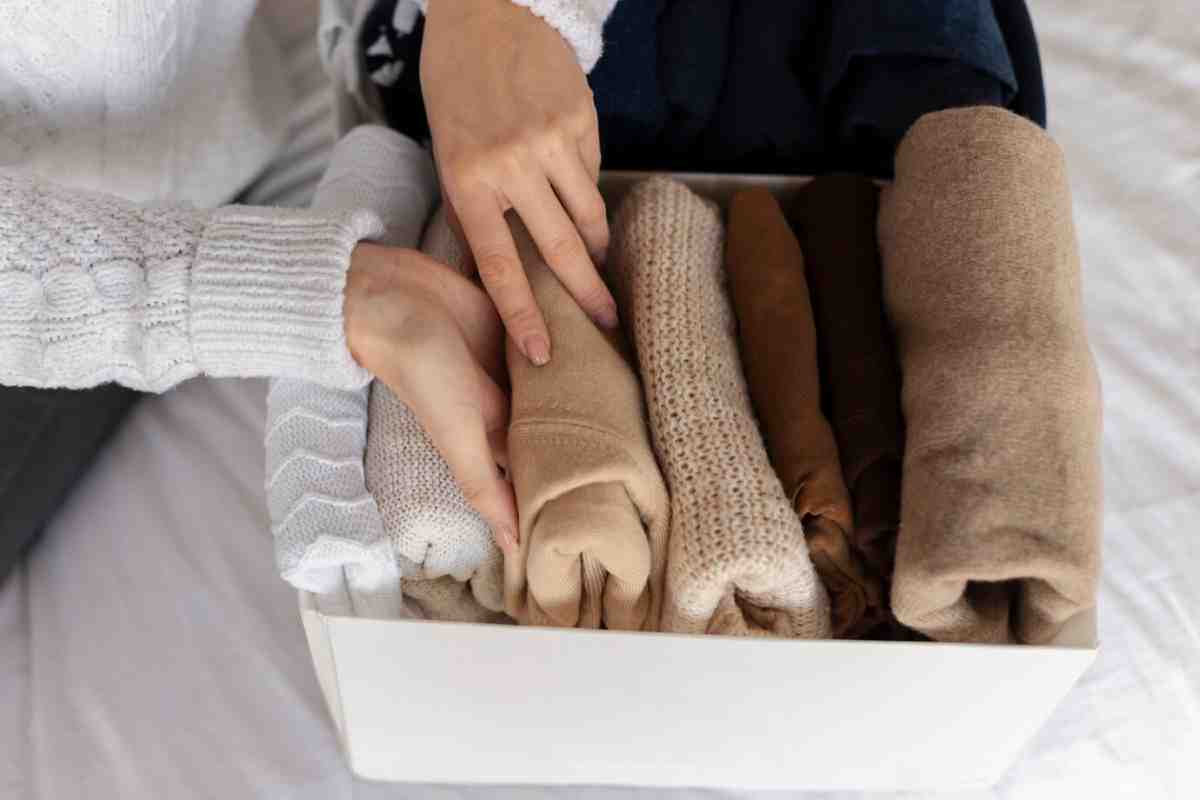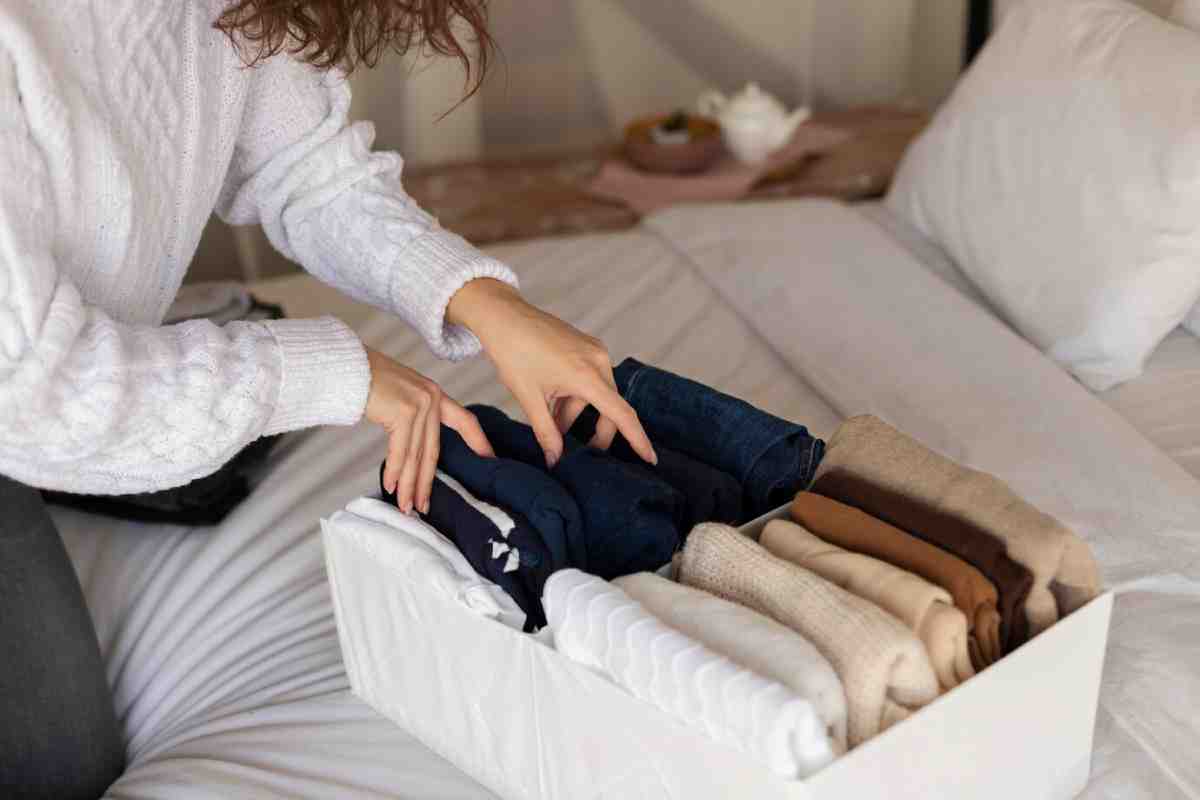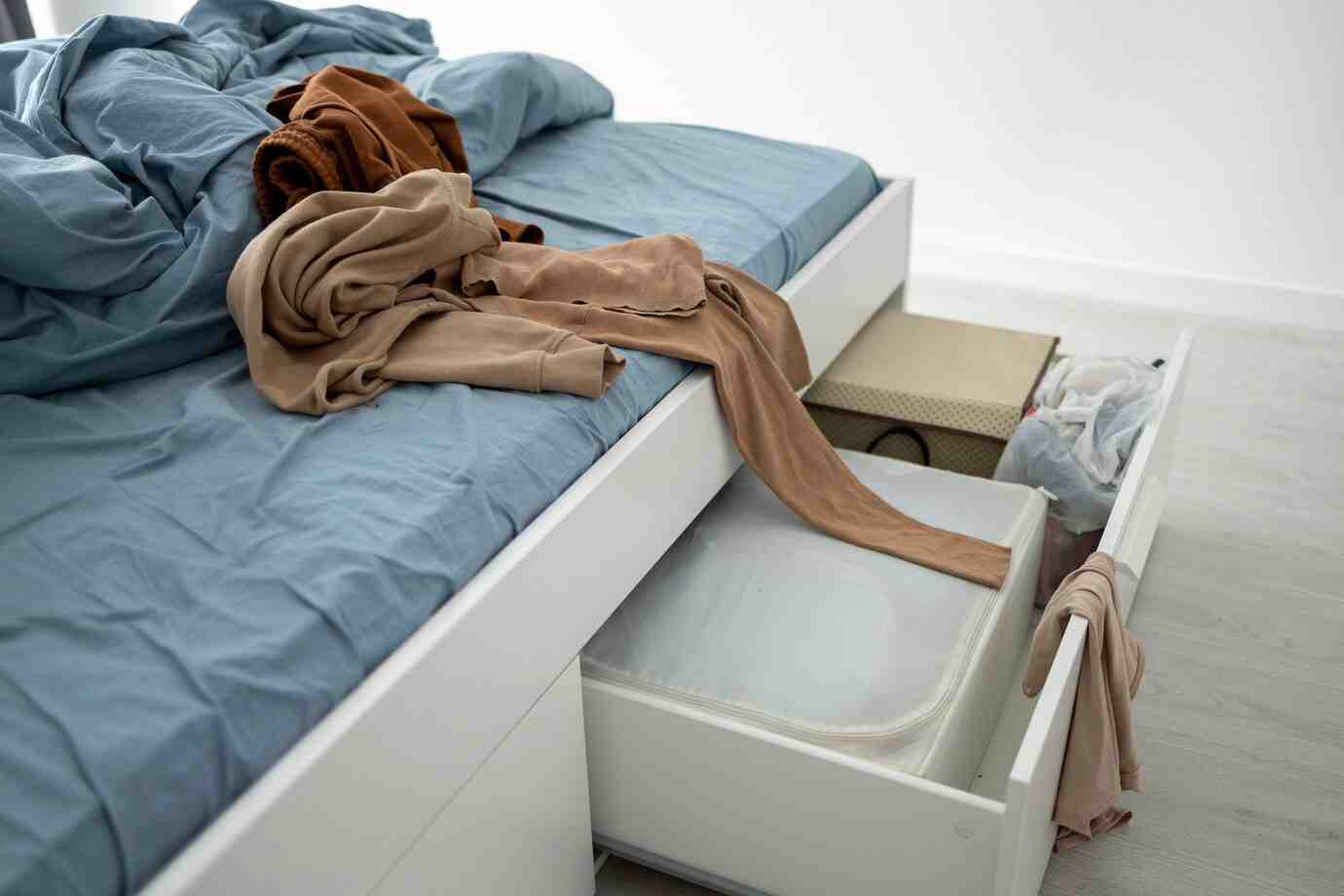
Vertical Folding: How to Maximise Your Closet Space
If you’ve ever stood in front of an overflowing wardrobe thinking, “I have nothing to wear!” you’re not alone. Many of us battle daily clutter without realising that a simple change in how we fold our clothes could revolutionise our mornings.
Enter the KonMari folding method — a transformative, space-saving approach that’s about more than just neat piles. With vertical folding, your clothes stand upright, visible, and ready to spark joy.
In this guide, we’ll explore how mastering vertical folding can enhance your closet organisation, simplify your routine, and breathe new life into your living space. Get ready to experience the magic of a beautifully organised wardrobe!
Why Vertical Folding Matters

Seeing is Believing
When clothes are stacked horizontally, we often:
- Forget what’s at the bottom
- Create messy piles
- Feel overwhelmed by choice
With vertical folding:
- Every item is visible
- Getting dressed becomes quicker
- Your closet stays tidier for longer
Saving Space, Sparking Joy
Vertical folding maximises drawer and shelf space, creating room not just for clothes but for clarity and peace of mind too. According to Marie Kondo’s Spark Joy, clients often reclaim up to 50% more space after adopting this technique.
Moreover, a study published in The Journal of Environmental Psychology shows that organised spaces contribute to reduced stress and better overall wellbeing, especially important during our fast-paced daily routines.
Essentials for Successful Vertical Folding
Choose the Right Storage
- Drawers: Best for folded clothes.
- Bins or baskets: Ideal for open shelving.
- Dividers: Help maintain neatness in larger drawers.
When setting up storage, prioritise easy access. Items you use daily should be at eye level or within arm’s reach, while seasonal or rarely worn pieces can be stored higher up.
Clothing Types That Work Best
Vertical folding works wonders for:
- T-shirts
- Jeans
- Jumpers
- Leggings
- Pyjamas
- Workout gear
- Children’s clothes
However, bulky winter coats or delicate evening gowns are better left on hangers to maintain their shape and longevity.
The KonMari Folding Method

Lay the Item Flat
Place the clothing piece on a flat, clean surface. Smooth out wrinkles with your hands — no need for ironing! This small touch ensures a neater final fold.
Fold Lengthwise Into a Rectangle
- For tops: Fold each side toward the centre, creating a long, slender rectangle.
- For trousers: Fold one leg over the other and straighten out the seams.
The aim is to eliminate uneven bulges.
Fold into Thirds or Quarters
Fold the rectangle into thirds (for most fabrics) or quarters (for bulkier materials) so it stands upright on its own. You want it to be compact but not strained, allowing it to stay in place without toppling over.
Stand It Up
Place the folded item upright in your drawer or basket. You should see a “file” of clothes rather than a stack. Each item stands proudly, ready to be picked without disturbing the rest.
Adjust As Needed
Every fabric behaves a bit differently. Softer, thinner fabrics may require slightly tighter folds, while thicker garments may only need to be folded twice to stand securely.
For slippery fabrics like satin, secure folds lightly with a soft band or place them in a compartmented drawer.
Closet Organisation Tips: Mastering the Art
Start Small
Decluttering experts, including Marie Kondo herself, advise beginning with one manageable space. Start with one drawer or shelf. Quick wins boost motivation!
Group Similar Items
Arrange clothes by type and usage:
- Gym clothes
- Office wear
- Casual weekend outfits
- Special occasion outfits
Grouping makes it easier to locate what you need without rummaging.
Colour Coordinate
Within categories, organise items by colour — light to dark — to create a visually soothing effect. This subtle structure enhances the boutique-like feel of your closet.
Maintain Regularly
Like any good habit, maintenance is key. Commit to a five-minute refresh each week. It’s a small investment for ongoing calm.
Real-Life Story: Vertical Folding Wins
Sophie, a busy mum from Bristol, struggled with overflowing laundry baskets and chaotic mornings.
“I used to throw everything into drawers. Finding anything was a nightmare,” she shares.
After learning the KonMari folding method, Sophie tackled one drawer at a time. Within a weekend:
- She reclaimed two entire drawers
- Morning routines halved in time
- Her kids even started folding their own clothes!
“It sounds silly, but it genuinely made our mornings happier,” Sophie says.
Another Testimonial: James’ Minimalist Wardrobe
James, a freelance graphic designer from Manchester, applied vertical folding to his capsule wardrobe.
“Now every morning feels intentional. I see every item, and it’s easier to stick to my minimalist aesthetic,” he explains. “Vertical folding genuinely changed my relationship with my clothes.”
Advanced Techniques: Taking Vertical Folding Further

Use Storage Aids
- Drawer organisers: Ideal for socks, underwear, and accessories.
- Transparent bins: Perfect for open shelving systems.
- Labelled baskets: Great for shared wardrobes or family spaces.
Rotate Seasonally
Pack away off-season clothing in breathable fabric bags or clear plastic bins labelled clearly. Vertical fold these too, so retrieval is simple next season.
Travel-Friendly Folding
Vertical folding also shines when packing for travel. Clothes folded vertically fit snugly into suitcases, minimise wrinkles, and make unpacking a joy.
Use packing cubes to maintain vertical folding while travelling.
Teach the Family
Share your new skills! Teaching your children or partner how to fold vertically fosters responsibility and saves you from re-folding work.
Common Mistakes and How to Fix Them
Overstuffing Drawers
Too many clothes defeat the purpose of vertical folding. If items can’t stand freely, it’s a sign you need a tidy-up.
Solution: Follow the classic KonMari advice: “Keep only what sparks joy.”
Skipping the Rectangle Step
A proper rectangular foundation ensures stability. Without it, items slump or unfold.
Solution: Take an extra 10 seconds to shape each garment.
Using the Wrong Storage
Wide, shallow drawers work best. Deep bins without dividers lead to collapsed piles.
Solution: Invest in simple dividers or create compartments with shoeboxes.
Quick Recap: Your Vertical Folding Checklist
- Lay flat and smooth out wrinkles
- Fold into a neat rectangle
- Fold into thirds or quarters
- Stand upright in drawers
- Group by category and colour
- Maintain with weekly mini-resets
Print this checklist and stick it inside your wardrobe door for a friendly reminder!
Conclusion: A Closet That Sparks Joy Every Day
Mastering vertical folding isn’t just a tidying tactic; it’s a daily act of self-care. By transforming how you fold and store clothes, you transform how you start your day — with clarity, joy, and ease.
Through the KonMari folding method, you’ll create a wardrobe that supports your lifestyle, reflects your personality, and makes every outfit choice a pleasure, not a chore.
No more frantic searches for your favourite t-shirt. No more mess after one rushed morning. Just simple, visual calm greeting you every day.
Why not take the first step today? Pick one drawer, give vertical folding a try, and see how your space — and your mindset — begin to shift.
Share your folding victories (or hilarious attempts!) in the comments below — we’d love to celebrate your progress with you!


